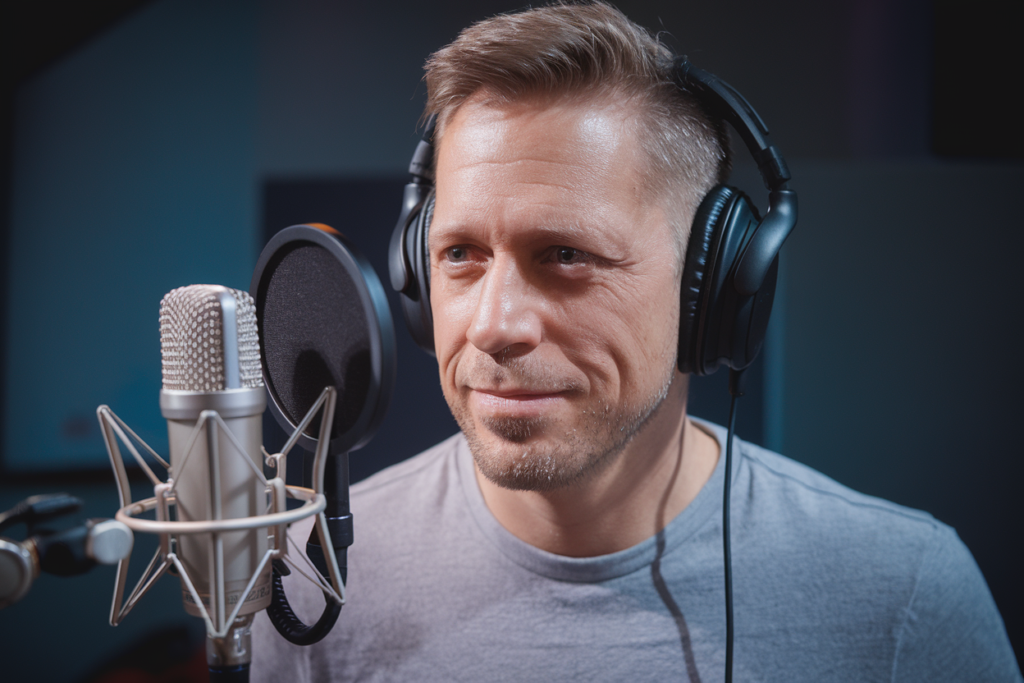Key Takeaways
- Cultural Representation: German media effectively showcases regional dialects, fostering a sense of cultural identity and belonging among audiences.
- Diverse Platforms: Television, radio, and print all integrate local dialects, enhancing authenticity in storytelling and connecting viewers to their heritage.
- Voiceover Importance: Skilled voice actors are essential in bringing dialects to life, ensuring accurate portrayals that resonate with local communities.
- Historical Context: Understanding the historical evolution of German dialects enriches appreciation for their contemporary representation in media.
- Language Awareness: Exposure to various dialects through media promotes a greater understanding of linguistic diversity, encouraging empathy and appreciation for different backgrounds.
- Community Engagement: The incorporation of dialects strengthens community ties by celebrating unique cultural elements within regional narratives.
Ever wondered how German media captures the rich tapestry of dialects across the country? As Germany embraces its diverse linguistic heritage, understanding how these dialects are represented in media becomes crucial. From regional news broadcasts to popular TV shows, dialects play a vital role in connecting communities and preserving culture.
Overview of German Media and Dialects
German media presents a vibrant tapestry of dialects, showcasing the country’s rich linguistic diversity. Regional news broadcasts often feature local dialects, allowing viewers to connect with their heritage. These broadcasts cater to communities while preserving cultural nuances, highlighting the importance of dialect in everyday communication.
Popular TV shows also reflect this diversity. Many series incorporate regional voices, giving characters authenticity that resonates with audiences. This approach not only entertains but also educates viewers about different dialects and their unique characteristics.
Voiceover talent plays a crucial role in bringing these dialects to life. Skilled voice actors adapt their performances to match specific regional accents, ensuring that portrayals remain true to local culture. Whether in commercials or animated features, voice artists contribute significantly by adding depth and personality through their craft.
As Germany embraces its linguistic variety, the impact on media continues to grow. The incorporation of dialects fosters community connections and enhances viewer engagement across various platforms.
Historical Context
German dialects have a rich history that shapes their role in contemporary media. Understanding this historical backdrop enhances the appreciation of how these dialects contribute to cultural identity.
Development of German Dialects
German dialects evolved from various regional influences, influenced by geography and historical events. The fragmentation during the Middle Ages led to distinct linguistic variations across regions. From Low German in the north to Bavarian in the south, each dialect developed unique phonetic and grammatical characteristics. Over centuries, these variations became integral parts of local culture, enriching Germany’s linguistic landscape.
Influence of Media on Dialect Usage
Media plays a significant role in both preserving and shaping dialect usage today. Regional news broadcasts often feature local dialects, making content relatable for viewers while fostering community connections. Popular TV shows increasingly incorporate regional voices, allowing characters to resonate authentically with audiences. This representation not only educates but also elevates awareness about different dialects among wider audiences.
Voiceover talent is particularly crucial here; skilled voice actors bring authenticity to characters through their mastery of regional nuances. Their expertise ensures that portrayals remain true to local culture, enhancing viewer engagement across platforms. As media continues embracing linguistic diversity, it reflects how deeply rooted these dialects are in everyday life and cultural heritage.
Contemporary German Media
German media today showcases a vibrant tapestry of dialects, reflecting the nation’s cultural diversity. Various platforms, from television to radio and print, embrace regional nuances that resonate with audiences.
Television and Dialects
Television plays a pivotal role in highlighting Germany’s dialectal richness. Popular shows integrate local accents and expressions, creating relatable characters for viewers. This authenticity fosters connection, making stories feel personal. When you hear familiar phrases or regional slang on-screen, it sparks recognition and pride in your heritage. Moreover, skilled voiceover talent brings these dialects to life, ensuring that portrayals remain true to their origins.
Radio and Dialect Representation
Radio continues to serve as an important medium for dialect representation. Local stations often broadcast programs in native accents, celebrating regional culture through music and storytelling. These broadcasts not only entertain but also educate listeners about their linguistic roots. Engaging voice actors add depth to radio dramas or talk shows by embodying various dialects with precision and flair. Such performances enhance listener experiences while reinforcing community bonds.
Print Media and Dialect Integration
Print media also embraces dialect integration through newspapers, magazines, and books that feature local language variations. Articles may include interviews with authors or locals who share insights into their cultural practices using authentic vernaculars. This approach enriches narratives while promoting understanding of diverse perspectives within Germany’s society. Overall, printed content serves as a valuable resource for preserving dialectal heritage.
In contemporary German media across all platforms—television shows featuring relatable characters speaking local languages; radio programs sharing community stories; print articles showcasing unique voices—dialects shine brightly as a testament to cultural identity.
Case Studies
German media offers a rich reflection of dialects, showcasing the country’s linguistic diversity through various platforms. This section highlights specific examples that illustrate how dialects are integrated into regional television programs, radio shows, and print publications.
Regional Television Programs
Regional television programs play a crucial role in highlighting local dialects across Germany. Shows often feature characters who speak in their native accents, making them relatable to viewers. For instance, popular series set in Bavaria incorporate Bavarian expressions and humor, fostering connections with the audience. These portrayals not only entertain but also educate viewers about regional culture and language nuances. The use of local voice talent enhances authenticity, ensuring that characters resonate with their community’s identity.
Dialect in Radio Shows
Radio shows serve as an important medium for promoting regional dialects while connecting listeners with their heritage. Local stations broadcast content using native accents that celebrate unique cultural elements through music and storytelling. Listeners enjoy programs featuring interviews or discussions conducted in local dialects, reinforcing cultural pride and familiarity. Voice actors skilled in capturing these dialects contribute significantly to creating engaging narratives that reflect the spirit of their regions.
Print Publications Featuring Dialects
Print media also embraces the integration of dialects by featuring articles written in local variations of German. Newspapers and magazines often include segments dedicated to regional stories told from a local perspective, enriching readers’ understanding of different communities within Germany. Additionally, columnists may incorporate colloquial expressions or idiomatic phrases that reflect everyday life in particular areas. By doing so, print publications foster a sense of belonging among readers while preserving linguistic heritage.
Each platform—television programs, radio shows, and print publications—plays an essential role in reflecting Germany’s diverse dialect landscape. This integration not only promotes cultural identity but also allows audiences to engage deeply with the stories being told.
Impact on Audience Perception
German media’s reflection of dialects significantly shapes audience perception. By integrating local accents and expressions, media not only entertains but also fosters a deeper connection to cultural identity.
Influence on Cultural Identity
Dialect representation in media enhances cultural identity by showcasing regional uniqueness. When you hear characters speaking in their native accents, it creates a sense of belonging and pride. This authenticity resonates with viewers, making them feel connected to their heritage. Local dialects serve as a bridge between generations, preserving traditions while adapting to contemporary narratives. As audiences engage with content that mirrors their own experiences, they gain insight into the diverse cultures within Germany.
Effects on Language Awareness
Media exposure to various dialects promotes language awareness among audiences. As you encounter different linguistic variations through television shows or radio broadcasts, your understanding of language diversity expands. You become more attuned to the nuances that differentiate one dialect from another, enriching your communication skills and appreciation for linguistic richness. The inclusion of skilled voice talent elevates this experience; talented voice actors bring these dialects to life, ensuring portrayals remain authentic and relatable. This dynamic interaction with language encourages viewers and listeners alike to celebrate the diversity within their communities while fostering empathy toward others’ backgrounds.
Conclusion
German media serves as a vibrant reflection of the country’s rich dialectal heritage. By integrating local accents and expressions, it fosters community connections while preserving cultural nuances. Whether through television shows that feature relatable characters or radio programs celebrating regional stories, each medium plays a vital role in showcasing these unique voices.
This representation not only enhances audience engagement but also nurtures a deeper understanding of linguistic diversity. As you explore German media, you’ll find that dialects enrich narratives and create authentic experiences that resonate across generations. Embracing this tapestry of dialects is essential for appreciating the true essence of Germany’s cultural identity.
Frequently Asked Questions
How do German dialects influence media representation?
German dialects enrich media by creating relatable content that reflects local culture. They foster community connections and emphasize cultural heritage, making characters and stories more authentic.
Why are dialects important in regional news broadcasts?
Dialects in regional news help viewers connect with their heritage. They preserve cultural nuances and promote a sense of belonging, enhancing the relevance of the news to local audiences.
What role do popular TV shows play in showcasing dialects?
Popular TV shows integrate regional accents to create authentic characters. This approach resonates with audiences, educates them about different cultures, and reinforces pride in local identities.
How does radio contribute to the representation of dialects?
Radio celebrates regional culture by broadcasting programs in native accents. These shows enhance familiarity among listeners through music and storytelling, reinforcing cultural pride within communities.
In what ways does print media reflect German dialect diversity?
Print media features articles that incorporate local language variations and insights from community members. This approach enriches readers’ understanding of diverse communities and fosters appreciation for linguistic diversity.
What impact does dialect representation have on cultural identity?
Dialect representation fosters a deeper connection to one’s cultural identity, bridging generational gaps. It creates a sense of belonging while promoting empathy for various backgrounds through authentic portrayals.
How can exposure to dialects enhance communication skills?
Exposure to various dialects through media promotes language awareness and enhances understanding of linguistic diversity. This helps improve communication skills by appreciating different expressions and nuances within languages.







